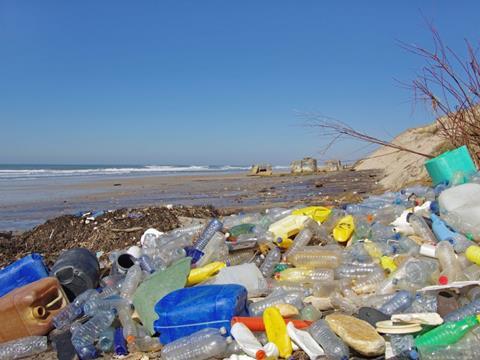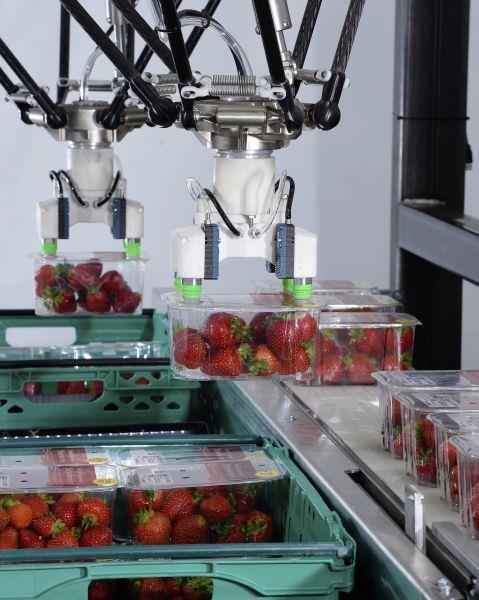
David Jahn, director at packaging automation specialist Brillopak, examines how robotics can help food manufacturers and packhouses to seize the opportunities presented by disruptive packaging trends.
Environmental concerns have been a consideration in packaging development for some years, but events in recent months have brought about a paradigm shift on packaging sustainability.
Blue Planet II’s devastating footage of plastic pollution in the world’s oceans sparked a public outcry, with consumers vowing to cut plastic waste and the UK government promising action. Then in January, China banned waste plastic imports, leaving the UK recycling industry with a huge problem on its hands.
The common theme that has emerged is the need to reduce use of plastic packaging - a challenge that requires an urgent response from governments, consumers, FMCG manufacturers and packaging technologists.
Packaging visionaries have already conceived some transformational technologies that, if scaled up successfully, could have the power to revolutionise the way everyday items are packaged.
Tomorrow Machine is a Swedish design studio that has taken inspiration from nature to develop packaging that dissolves or perishes with the product. Innovations include a pod made from caramelised sugar for packaging oil-based food. To open it you crack it like an egg and the empty shell can be dissolved in water.
Indiana-based company MonoSol has pushed the boundaries of vinyl acetate chemistry to create food grade, water-soluble protective films that can be used to package produce, whilst Breakdown Plastic has engineered an additive that makes plastic ‘land-fill friendly’, biodegrading within five years.
Then there is ‘Myco Foam’, a mushroom based plastic invented by two students at Rensselaer Polytechnic Institute in New York. This substrate is ‘grown’ from mycelium - the vegetative part of the mushroom - and agricultural waste, and is already in commercial use as a polystyrene alternative.
These are just a few of the disruptive packaging technologies on the horizon. Whether or not they make it from the design studio or laboratory onto the supermarket shelf is largely dependent on practicality, performance and economics. Will an edible starch or plant-based film offer the same barrier and shelf life properties as a conventional plastic film or will it lead to increased levels of food waste? Will a ‘sugar pod’ offer adequate protection to the product during its journey from production line to retail aisle? And can a plastic alternative be handled efficiently on a factory packaging line?

It is on this last point that robots can assist. Owing to their inherent flexibility and speed, robots will be at the core of these packaging lines of the future. However, their ability to handle novel substrates and formats will require development of end-effector and product infeed technologies.
From a robotics perspective, the main challenge with most greener, biodegradable packaging formats is that they are too fragile to handle with conventional grippers. Thoughtful engineering of more gentle end-effectors is required.
Some progress has been made in this space; Brillopak’s R&D has yielded a patent-pending end-effector with a hand-like form, designed to delicately scoop up and place products. The team calls it the ‘Glove’. The reason is the tool uses an action like a closing hand or flower to gently pick and release items with precision and control. Designed initially for a produce industry customer who wanted the flexibility to change the number of potatoes in a bag without impacting line speed, the ‘Glove’ overcomes the issue of complex reprogramming. That’s because it can pick up each potato pack individually rather than relying on collation. In the line of the future, this end-effector technology could be deployed to handle items like the sugar-pod.
Vacuum is another inherently gentle end-effector technology that is likely to feature on future robotic systems. Brillopak’s approach to vacuum handling is different to others in the industry in that the company uses cups with independent vacuum generators for greater control over the picking and placing operation. Bagged salads, punnets of berries and individual poppadoms are just some of the products that are currently being handled via vacuum, and Brillopak expects to see new applications emerging in the next few years.
The ability to handle a pack without damaging it is essential, but this is only one aspect of viable production. The line also has to run efficiently. With the trend towards shorter production runs, multiple SKUs within ranges and mixed cases and pallets, chances are, the lines of the future won’t be dedicated to a single product either. Packaging machinery will need to be able to switch frequently between numerous different products, presenting a challenge for efficiency. The solution, emphasises David, will be to use the same robot head to handle multiple packaging and product types through interchangeable tooling and infeed systems.
To achieve this level of flexibility, changeover times will be of the essence. The operator will need to be able to select the correct end-effector, infeed system and palletising pattern at the touch of a button. Changeovers will, more often than not, be performed remotely, via a smart phone or laptop.
Vision systems will play a key role in the efficient running of these lines, not only for guiding the robot to pick up product in any orientation, but also for ensuring that ever more exacting quality control and traceability demands are met.
Be prepared
Whilst it might be years before some of the more radical nascent packaging technologies are market ready, future-proofing should be a feature of every automation project. “Our advice would be that any investment in automation today must be able to handle the packaging of tomorrow - even packaging formats that the market does not know about yet,” notes David. What may seem like an impossible brief actually boils down to building more flexibility than ever into line design.
More info:











